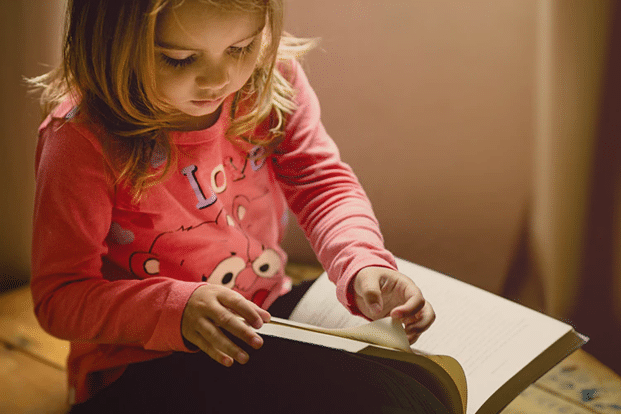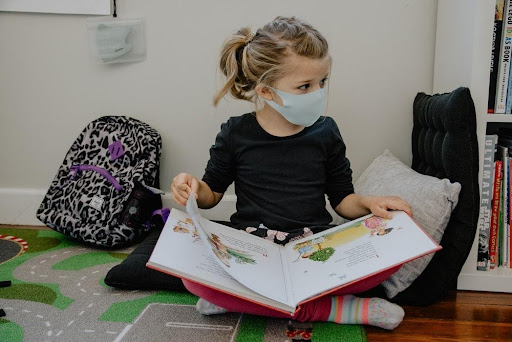Benefits of Using Sight Words

With all the diverse approaches at our disposal today, it can be challenging to opt for tactics and activities that are best designed to help kids become confident, fluent readers. To compound the situation, children, parents, and instructors are all heavily overworked! As an adult immersed in the hustle and bustle of life, you may be continuously faced with the task of deciding ways to spend quality time with your children. A productive way to utilize the time you spend with your children is by giving them sight words education.
We’ve combed through some of the many advantages of helping your children focus on sight words. Let’s walk through them together:
Sight Words Help Build Confidence in Young Readers
When it comes to learning a skill, the importance of self-efficacy (an individual’s belief in his ability to achieve a goal) cannot be overstated. Children are considerably more inclined to learn something new if they believe they can do it. Thus, enhancing their confidence is key.
Given that sight words make up an incredible percentage of words used in children’s textbooks (around 50% - 75%) knowing the list of containing high-frequency words gives children a massive advantage as they attempt to read new stories. As soon as a young reader realizes that they can easily identify over half of the words on a page, it’ll boost their confidence to read further
Children Don’t Have to Put in Too Much Effort into Understanding More Difficult Words
Once children know sight words, they only need to slow down their reading to focus on decoding new, challenging words.
Contrary to what some people may believe, reading is a difficult job! We, as fluent readers, often underestimate how much concentration and energy it takes to read when one doesn’t recognize majority of the words written on the page in front of them. When young students are required to decipher each word in a sentence, they feel frustrated and lose track of the meaning of the text. They become so engrossed in "sounding out" the words that they deviate from understanding the content of the text itself.
Once children are taught the art of mastering sight words, they just need to slow down their reading in order to concentrate on decoding new and more complex words.
Sight Words Provide Clues
We frequently encounter sight words in our reading and writing. Many times, these words do not have an accompanying image.
Memorizing sight words has now been scientifically proven to induce confusion in young readers since they get to reading things “in context”. For example, in the absence of visual clues, imagine that there are slight misspellings in a common word used in a paragraph – say “whose”, “who’s” and “whoosh”. If the correct usage is the first one, children will often autocorrect in the other two cases and read as if “whose” had been repeated thrice.
The problem with memorizing sight words, without any basis for phonetic patterns, is that many sight words become irregular – something that taxes the mind unduly without some other association.
The science of reading teaching decodables is markedly different. Students will be taught to recognize graphemes – which are phonemes blended together – to not just read and memorize letters and then guess.
It is estimated that there are only 44 most common combinations of letters and sounds – including the basic letters and vowel sounds, along with combinations such as “-ing”, “th” and “sh”. If a young reader learns these, s/he is ready to build a memory bank of sound and letter combinations. This is far easier than dealing with the ~15,000 English syllables.
There are two approaches using phonics, each considered to be better than memorizing sight words: (a) synthetic phonics, where the reader learns the sound of each letter, then combines them to form the word, and (b) analytic phonics – where the child is taught how to spot graphemes within words and use that knowledge to pronounce other words.
An example might be to know the word “bark” and then read “lark”. With synthetic phonics, you would treat each letter separately, so you review the “l”, the “a” etc. With analytic phonics, you recognize the “_ark” sound pattern and add the “l” to it.
Sight Words Provide Clues
Even though many sight words have less than five letters, they facilitate young readers comprehend a text. They provide the key to the context of a phrase or sentence.
While illustrations and visuals are used in multiple children's textbooks, we ultimately want our kids to be able to determine the meaning of a text-primarily by reading the words. Sight words provide crucial clues to the overall meaning of a sentence, which helps children understand what they're reading.
Let’s take the example of a few verbs: run, jump and sit. The sentence “he loves to run in the playground” will change contextually when one of the other two verbs (jump and sit) are substituted. Similarly, understanding the meaning of pronouns such as he, she, you and I, is critical to make sense of the sentences they are used in.
Sight Word Instruction Builds a Foundation for Reading New and More Complex Words
Sight word education has far-reaching benefits that extend beyond the realm of simply helping kids read. Not only will these children come across the same words in advanced books, but the entire process of learning sight words will polish their overall vocabulary skills. It may very well result in them becoming avid readers over time and develop crucial learning techniques they can employ in future endeavors.
Children, upon learning sight words, connect their existing understanding of the word (meaning and pronunciation) with its spelling. Their ability to merge the two is aided by their understanding of the alphabet. The letters and their sounds form a mnemonic that assists children retain the specific word in their memory.
According to researchers, when kids go through extensive lists of sight words enough times, it’s bound to improve their vocabulary as the technique becomes embedded in their repertoire of reading skills. They will then use this strategy intuitively to incorporate other complicated sight words into their knowledge bank.
Sight Words Augment Esl Instruction
As more and more ESL students join classrooms and communities today, it is incumbent upon instructors to discover strategies to reach them. A core objective of ESL instruction is teaching functional English language skills to students.
There is an array of benefits for ESL learners who are taught sight words. Given that most of these words frequently appear in children's stories and come up in daily interactions, focusing ESL training on sight word education isn’t just effective- it’s the need of the hour.
Wrapping It Up
Needless to say, learning to read is a tricky business. A variety of strategies along with a specific skillset are required to create strong readers. The aforementioned benefits should motivate you to teach children sight words as this is one of the initial steps that’s tried and tested for inculcating adequate reading skills within young readers.
If you believe in the merits of homeschooling, start off by teaching sight words to children and adopting effective techniques used by professional educators. Make some flash cards at home or print out a list of words with the help of Internet and you’re all set to teach your kid sight words in no time. Best of luck!
Start Teaching Reading for Free Now!
Access Level 1’s four interactive stories and the accompanying supplemental resources to teach elementary students how to read. No credit card is needed. Join the 42,635 teachers and students using our reading program.

